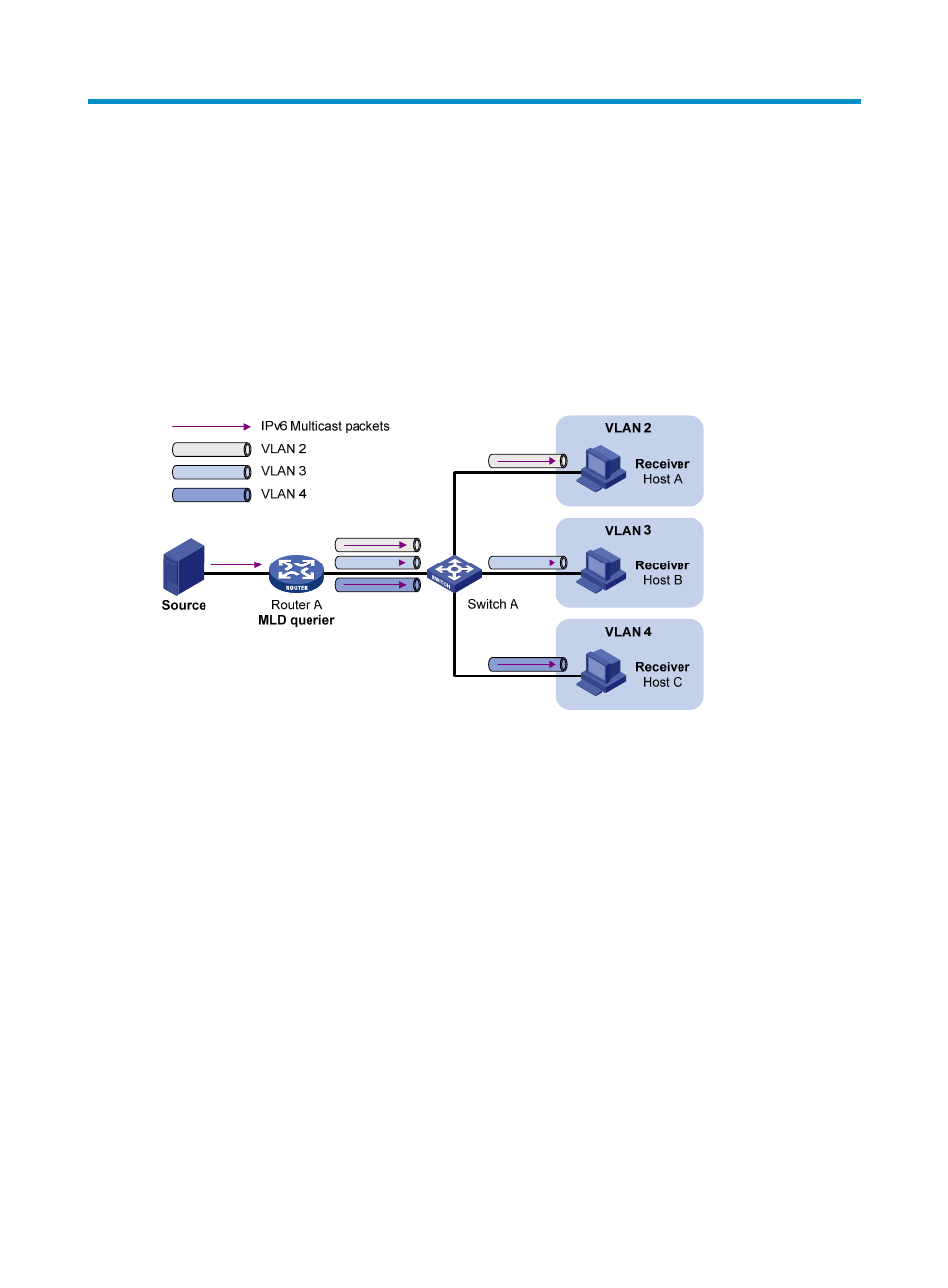Ipv6 multicast vlan configuration, Ipv6 multicast vlan overview, Sub-vlan-based ipv6 multicast vlan – H3C Technologies H3C S10500 Series Switches User Manual
Page 320

305
IPv6 multicast VLAN configuration
IPv6 multicast VLAN overview
As shown in
, in the traditional IPv6 multicast programs-on-demand mode, when hosts (Host A,
Host B, and Host C), which belong to different VLANs, require IPv6 multicast programs on demand
service, the Layer 3 device, Router A, must forward a separate copy of the multicast traffic in each user
VLAN to the Layer 2 device, Switch A. This results in not only waste of network bandwidth but also extra
burden on the Layer 3 device.
Figure 77 Multicast transmission without IPv6 multicast VLAN
The IPv6 multicast VLAN feature configured on the Layer 2 device is the solution to this issue. With the
IPv6 multicast VLAN feature, the Layer 3 device needs to replicate the multicast traffic only in the IPv6
multicast VLAN instead of making a separate copy of the multicast traffic in each user VLAN. This saves
the network bandwidth and lessens the burden of the Layer 3 device.
The IPv6 multicast VLAN feature can be implemented in sub-VLAN-based IPv6 multicast VLAN and
port-based IPv6 multicast VLAN.
Sub-VLAN-based IPv6 multicast VLAN
As shown in
, Host A, Host B and Host C are in different user VLANs. On Switch A, configure
VLAN 10 as an IPv6 multicast VLAN, configure all the user VLANs as sub-VLANs of VLAN 10, and
enable MLD snooping in the IPv6 multicast VLAN.